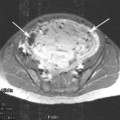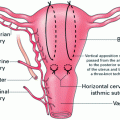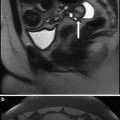John Reidy, Nigel Hacking and Bruce McLucas (eds.)Medical RadiologyRadiological Interventions in Obstetrics and Gynaecology201410.1007/174_2014_1011
© Springer-Verlag Berlin Heidelberg 2014
Costing Issues and UAE in the Developing World
Abstract
Uterine Artery Embolisation (UAE), first described in France in 1995, rapidly became commonplace in many countries, but has had poor uptake in the developing world. Since 1998, I, along with local contacts and colleagues in Radiology and Gynaecology have been able to set up large scale UAE services in the Caribbean, based out of Trinidad and from 2009 have added UAE to a comprehensive ‘Fibroid centre’ in Kenya at the Aga Khan University Hospital, Nairobi. In each situation this has required a close working relationship with medical, hospital and political personnel. Financial considerations, careful case load selection and planning with robust pre-procedural screening and imaging has been arranged as has very careful post-procedural care and follow-up. Over 1000 UAE cases have been performed in the Caribbean with very high success rates and no major complications nor deaths. Over 100 patients have now been treated in Kenya with a similar success rate and low complication rates. A mixture state-funded and private patients have been treated in both settings. The use of Gelfoam slurry as the embolic of choice in the majority and the avoidance of micro catheters wherever possible has led to an affordable procedure with costs equivalent to or less than hysterectomy in both settings.
1 Introduction
Uterine Artery Embolisation (UAE), first described in France in 1995 (Ravina et al. 1995), rapidly spread through USA (Goodwin et al. 1997), the UK (Bradley et al. 1998), much of Europe (Golfieri et al. 2000; Lohle et al. 2001; Zupi et al. 2001), Canada (Pron et al. 2003a, b), but has had patchy take up in many European countries, Australasia the Middle and Far East as well as countries in the Developing World.
Initially lack of evidence, lack of Gynaecological support and worries over costs, both financial and radiation, concerns over complication rates (Vashisht et al. 1999; Lanocita et al. 1999; Godfrey and Zbella 2001) and uncertainty over the effect on fertility were all cited as reasons for poor take up of the UAE procedure.
In the UK the National Institute for Clinical Excellence (NICE), looked closely at UAE and issued guidance in 2004, 2007 and lastly in 2010 where they recommended UAE as one of the first line therapies in women with symptomatic fibroids wanting to avoid hysterectomy. The Royal Colleges of Obstetrics and Gynaecology and the Royal College of Radiology issued joint guidelines in 2000 (Royal College of Radiologists and Royal College of Obstetricians and Gynaecologists 2000) and 2009 (RCOG and RCR 2009), as did the American College of Obstetrics and Gynaecology in 2008 (American College of Obstetricians and Gynaecologists (ACOG) 2008) and the American College of Radiology in 2009 (Burke et al. 2009). In Canada, the Society of Obstetricians and Gynaecologists along with the Canadian Association of Radiologists and Canadian Interventional Radiology Association issues guidelines in 2004 (Guidelines 2004). The Medical Services Advisory Committee of Australia provisionally approved UAE in 2006 (Application 1081).
A 2009 online survey assessing all members of the Cardiovascular and Interventional Radiologic Society of Europe was undertaken documenting the uptake of UAE across Europe (Voogt et al. 2011). 167 centres confirmed that they were performing UAE with UK, Germany and France having the highest number of centres with 24 countries having at least one UAE practicing hospital. A web-based survey undertaken by www.femisa.org.uk recorded 100 UK centres now offering UAE with over 20,000 procedures having been performed since its introduction.
UAE is, therefore, commonplace in Europe and the developed world. The UK-based HTA funded HOPEFUL study included a careful cost-effectiveness analysis (Hirst et al. 2008; Wu et al. 2007) and concluded that UAE was more cost-effective than hysterectomy even after taking account of complications seen after UAE.
Outside of Europe and North America the uptake of UAE has been patchy. Reports from Hungary (Szabo et al. 2001) and Hong Kong (Chiu et al. 2001) in 2001, India (Bapuraj et al. 2002), Brazil (Messina et al. 2002), Kuwait (Ahmad et al. 2002), Korea (Bai et al. 2002) and Taiwan (Chen et al. 2002) in 2002 and China (Hong 2004) and South Africa (Prollius et al. 2004) in 2004 were published.
Having started a UAE service in UK based in Southampton in 1998, I was keen to take this exciting new procedure out into the developing world. Clearly, the economic challenges and demands of setting up and maintaining a working UAE practice from afar would create many new obstacles and challenges.
2 UAE in the Caribbean
In 1998, because of the high prevalence of fibroids and the lack of a UAE service, I contacted the head of the Radiology Department at the University of West Indies in Trinidad. After visiting and discussions, it was obvious that they could not develop a UAE service on their own, Dr. Omar Khan, representing the University of WI in Trinidad felt that with hard work and good will on all sides it would be possible to setup such a service in Trinidad.
Following meetings with several Trinidad-based Gynaecologists and Anaesthetists a referral pattern and postoperative management strategy was agreed upon.
The plan was for me to visit several times a year. In each week-long visit, I would carry out UAE cases in the University Hospital Cardiac Catheter Laboratory. I would instruct, and train local clinicians, radiographic technicians in UAE techniques as well as teach medical students about the wider uses for Interventional Radiology. Permission was sought and granted by the hospital management and full medical registration with the Medical Board of Trinidad and Tobago was granted on application and interview.
Overall costing and funding this service was to be my responsibility. No monies were available from the hospital. Private patient fees could be levied in this partially state run, partially private medical institution. All-inclusive fees were calculated and charged to cover Radiological, Gynaecological, Anaesthetic, Hospital and Cath Lab charges as well as to cover the cost of all consumables and drugs.
Private Insurance companies were briefed and most agreed to provide cover for this procedure. After the first few cases there was press interest and newspaper and television companies invited us to discuss this exciting new noninvasive treatment. The word spread from patient to patient and a mixture of self-referral and Gynaecology-referral quickly evolved. Numbers grew from 20 per annum up to over 60 cases in 2004. By this stage the Ministry of Health (MOH) of the Government of Trinidad and Tobago were asking for expressions of interest to help the large waiting list of non-insured women awaiting surgical treatment for symptomatic fibroids. I was approached and successfully bid for some of these cases.
A new model for MOH patients was proposed and accepted. These women would be referred directly to ‘Fibroid Caribbean’ a company setup to manage this additional workload. An ultrasound and Gynaecological assessment then followed and suitable patients were scheduled to undergo UAE on one of my regular visits to Trinidad. Numbers quickly grew during 2004 and 2005 with over 30 and 80 cases in each year respectfully such that extra Interventional Radiologists (IRs) were required to provide this service. At that stage there were still no suitably trained local Trinidad or Caribbean-based IRs and trained UK-based IRs were invited out and after a successful proctored week under my guidance they were employed to provide additional weeks of intensive UAE procedures. During 2006 and 2007, 115 and 215 MOH patients were treated by up to 4 UK-based IRs visiting up to seven times per year and performing up to 35 cases in a 5 day week. Additional private UAE procedures were accommodated and in Nov 2008 46 patients were treated by me during a 1-week visit.
Stay updated, free articles. Join our Telegram channel

Full access? Get Clinical Tree






